Homelands in Norway Part 1
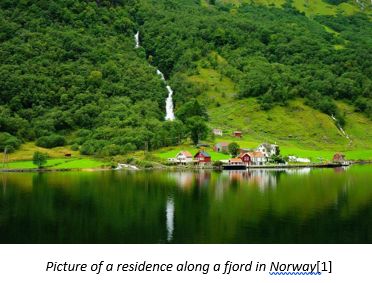 19
19Mar

Norway is known for the natural beauty of its land, from its fjords, to its mountains, to its rolling green hills. For millennia, its people have felt deeply connected to the homelands in Norway as farming and agriculture provided the means for survival upon its untamable surface. Have you ever wished you could see your Norwegian ancestors’ homelands? Whether or not you have the ability to go there in person, there are many wonderful tools and resources for learning about and even seeing the places where your Norwegian ancestors came from. This blog will be part one in a two-part series on learning about, visiting and/or seeing remotely your family’s ancestral places.
Homelands in Norway
The Ancestral Farm
For centuries, “the farm” or gården was a central feature of Norwegian society. From the time of the Vikings (800-1050), nearly every person was attached to a farm as an owner, laborer, soldier, or servant/slave. In the Middle Ages, nobility owned most of the farmland and the rest of the population worked the land. However, in the middle of the 1300s, the black plague hit and decimated the Norwegian population. So much of the population died, nobility included, that many farms were left empty and unclaimed.[2]
From this point on, things changed drastically. The Norwegian nobility mostly disappeared, and Denmark took over. By the 1600s, there were far fewer large estate owners and many more individual landowners.
In the 1800s, the population in Norway boomed. With not much farmland to begin with (only 2% of the land in Norway is farmable), there was less opportunity for Norwegians to make a life for themselves on a farm. Many moved into growing cities, which served to further reduce available farmland, and finally the age of emigration arrived. Unsatisfied with prospects in Norway, hundreds of thousands of Norwegians flooded out of Norway during the 19th and early 20th century. Many of those emigrants came to America and the connection to their homelands in Norway was gradually forgotten.
Place of Origin
As discussed in earlier blog posts, the first and often most difficult challenge is to find the ancestor’s place of origin in Norway. Our research experts at Price can help with that. But after identifying a place of origin, most people keep to the church records, trace back their ancestry, and never stop to inquire about their ancestors’ experiences on the beautiful Norwegian landscape.
Where Exactly Did My Ancestor’s Live?
With a farm name and the name of the parish it belonged to, a number of useful resources are available for learning exactly where the farm was located.
- com – This map shows the boundaries of Norway’s counties and parishes across the whole country. A specific parish and farm can be searched, and the result will be a marker placed on the map.
- no – This map was produced by Norway’s mapping authority and has detailed information about properties and streets. Look for the “Translate to English” button on the webpage to make using this Norwegian website easier.
- Bygdebok – Bygdebøker are Norwegian local history books which gather the history of farms and those who lived on them. Often, they include the modern property number so that you can find the current property even if your ancestors have not lived there for hundreds of years.
How Can I Learn the History of My Family’s Ancestral Farm?
- Bygdebok – As mentioned above, the Norwegian farm books gather the histories of local farms. While they are written in Norwegian, a translation can provide interesting and insightful information about the history and geography of the area.
- Historical Societies – All over Norway, there are regional historical societies called historielags. Most Norwegians speak and write English, so it never hurts to send an email and see what you can learn.
- Museums – Local museums can be a great way to find information on people and places where your ancestors lived.
How Can I See My Family’s Ancestral Farm?How
- Google Earth – Some places in Norway are pretty rural and off the beaten track, but anywhere close to a public road is typically viewable on Google Earth. Once you find the place on a map, it is easy to find it on Google Earth.
- no – The Nasjonal Biblioteket or National Library of Norway has a vast collection of photographs from all over Norway. It is always worth typing the farm or parish name into the catalog search and seeing what comes up.
- Museums – Museums often preserve photograph collections. Send an email to a museum local to the area your ancestors came from and see if they have any relevant photographs.
- Living Relatives – Most individuals with Norwegian ancestors will also have living Norwegian cousins. Use our expert Norwegian researchers to find your living relatives and then contact them to see if they have old family pictures or would be willing to take pictures for you.
Example:
Lars Olsen was born 1815 in Nord Odal parish and lived on the farm Linnerud for many years. First, it was necessary to figure out exactly where it was located.
Norwayparishes.com – This map shows three results for Linnerud/Linderud in Nord-Odal parish.
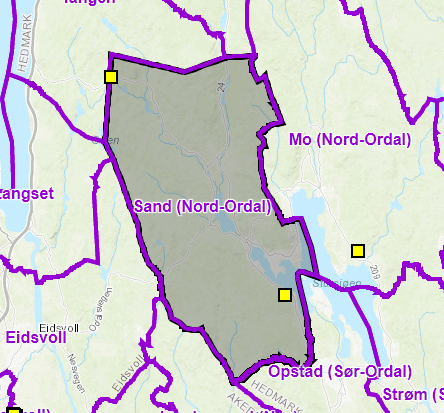
Bygdebok – In the book, Nord-Odal Bygdebok, bind 2 by Birger Kirkeby, it referred to Lars Olsen as “Lars Olsen from Linnerud under Trauten, born 1815.“[3] So, the farm Trauten was found on the map.
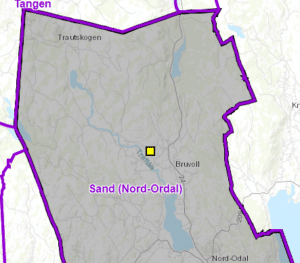
Unfortunately, Trauten was right in the middle, so this was not particularly helpful. In the table of contents of the book, other farms within Trauten that are near to Linnerud were mentioned, like Dalsrud and Trøftskogen.
Norgeskart.no – Showed the properties Dalsrud and Trøftskogen near the top left Linnerud marker right on the border of Nord-Odal parish.
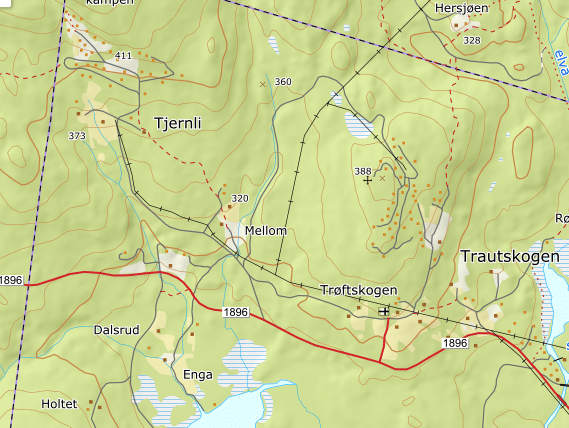
The next step was to learn about the farm. The bygdebok for Nord Odal, volume 2 also told about the history of Linnerud. Because of copyright it cannot be copied word for word, but the entry said that Ole Gundersen, the father of Lars Olsen, cleared and built up the farm Linnerud about 1812-1814. Lars Olsen was born there. After Ole Gundersen, his son Ole Olsen took over. He passed on to his son and then the place was abandoned in 1911.[4]
The last step was to see it. While relatives could be contacted or Google Earth could be used, we were able to take a trip to Norway and see the place where Linnerud used to be.
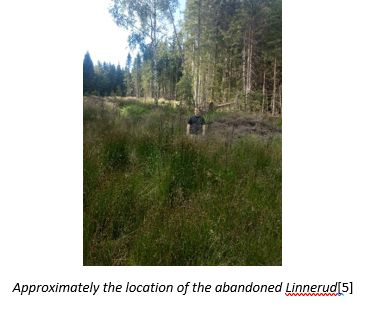
Conclusion
The next part of this blog will handle taking a trip to Norway to visit ancestral places. It will include tips and ideas for what research and prep work should be done beforehand to get the most out of the trip and what kinds of places you should visit in the area where your ancestors came from.
-Forrest
Further Reading and Sources:
[1] https://pixabay.com/no/photos/norge-fjorden-songne-483185/.
[2] Øivind Stenersen, Norges Historie (Oslo: Cappelen Damm, 2015) (in Norwegian).
[3] Birger Kirkeby, Nord-Odal Bygdebok, Bind II (Nord-Odal Kommune, 1971): 105
[4] Birger Kirkeby, Nord-Odal Bygdebok, Bind II (Nord-Odal Kommune, 1971): 88-89
[5] Photo courtesy of Forrest Emmett.
Do any of your ancestors come from homelands in Norway? Let us know in a comment below!
